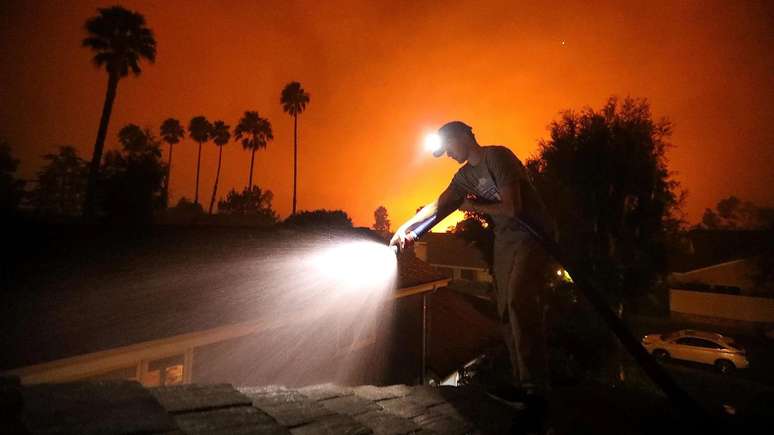According to a preliminary damage estimate, the cost of the fire on the American West Coast ranges from $52 to $57 billion (R$317 to R$347 billion).
From increased vegetation to wind-blown embers, the BBC Earth team examines why the Los Angeles fires have been so intense and growing so quickly.
The flames spread with frightening speed. When residents of the Pacific Palisades neighborhood west of Los Angeles began seeing smoke rising from the hills in front of their homes on the morning of Jan. 7, the fire was already about 10 acres in size.
Within 25 minutes the fire spread to cover an area of over 80 hectares (about 112 regulation football fields) and, in the following hours, it spread, destroying homes, theatres, restaurants, shops, schools and entire communities.
By the early hours of January 9, the Palisades fire had already covered an area of approximately 6,900 hectares and, together with the other fires in the Los Angeles area, became one of the worst fires ever recorded in the city’s history. , according to AccuWeather Chief Meteorologist Jonathan Porter.
According to a preliminary damage estimate, the cost of the fire ranges from $52 to $57 billion (R$317 to R$347 billion).
Why were the fires so intense and developing so quickly? We list five explanations.
1. Rapid growth of combustible material
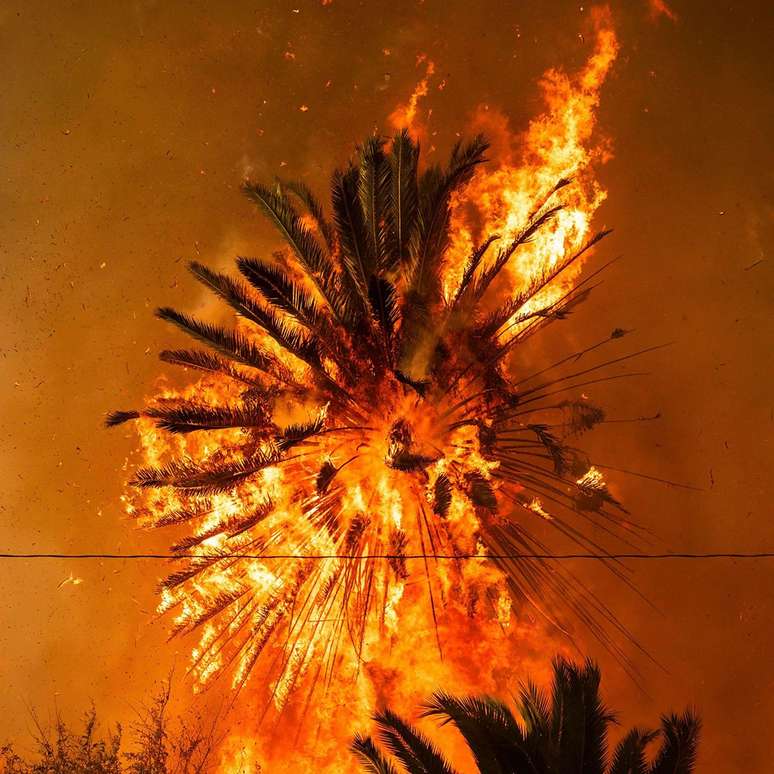
A period of heavy rain in 2024 associated with El Niño is believed to have caused high fire risk conditions this winter.
Rain is often thought to be bad for fires. And if it rains during a fire, it’s bad for the fire,” says Rory Hadden, a fire science researcher at the University of Edinburgh.
But rain before a fire can lead to the growth of a lot of vegetation, which then becomes potential fuel.
“And then you get into a period of drier climate, and then the vegetation dries out very, very quickly, and there’s more of it. So there’s more fuel buildup.”
The period of wet weather in 2024 followed by a drier period produced the “perfect conditions for fires to spread,” scientist Maria Lucia Ferreira Barbosa of the UK Center for Ecology and Hydrology said in a statement.
This change from a very humid climate to a very dry one is known as “hydroclimatic whiplash.” A recent study found that the risk of hydroclimatic whiplash has increased from 31% to 66% globally since the mid-20th century.
2. Santa Ana winds with a “hair dryer” effect.
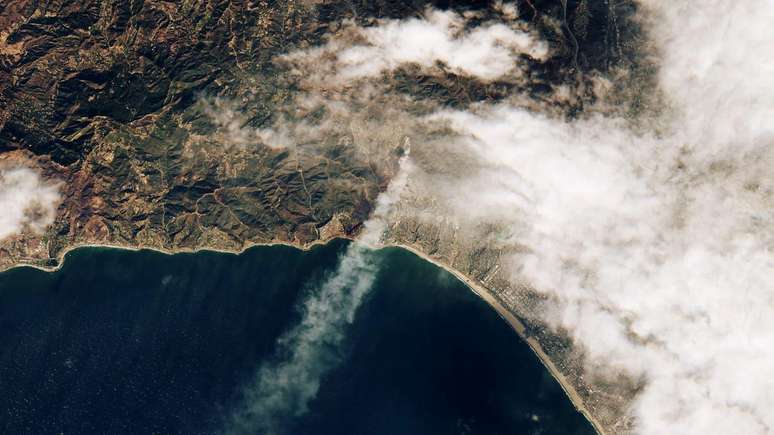
The fires were also fueled by a strong windstorm.
Strong winds caused flames that started on mountain slopes west of Los Angeles to grow into a fast-spreading wildfire that spread through dry vegetation to engulf the Pacific Palisades neighborhood near Santa Monica.
The winds are generally warm and dry, which allows more moisture to be drawn from the vegetation.
“(With) all fires, you need three things: some sort of ignition, something to burn, and some oxygen in the air,” Hadden says. “But what made these fires so incredible was the speed of the winds coming from the center of the California desert.”
They are known as Santa Ana or Föhn winds and can cause fires to behave erratically.
“These winds are very, very dry. They move very, very fast, so once a fire starts, it’s very easy for it to spread and grow very, very quickly,” Hadden says.
“We’ve seen winds of over 100 miles per hour. Naturally, this causes flames to grow and fires to quickly spread across the landscape, wherever they originated.”
In some cases, these windstorms can also cause wildfires, downing power lines that set nearby vegetation on fire.
3. The flames
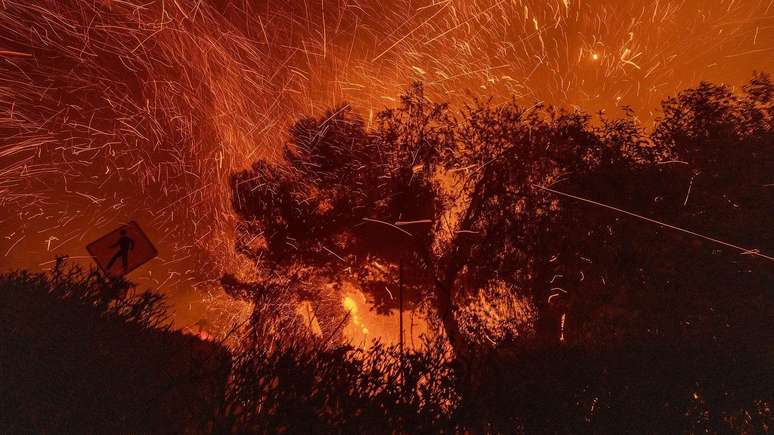
These winds not only fan the flames and spread the fire throughout nature, but also transport the embers. These embers, or embers, are the leading cause of structural losses in fires, Hadden says.
“There are things in the way of the flames (like roads or buildings),” Hadden says. “But nothing stops those embers from moving.”
Winds lift embers from burning vegetation and move them forward.
They can spread only a few meters ahead of the fire, igniting new materials, or they can jump up to several kilometers at once, starting new fires some distance away.
“There are reports that these things travel tens of miles and land in crevices around a house, maybe in some ornamental vegetation, and start burning houses,” Hadden says.
“If a single ember sets fire to a single house, firefighters can put it out. But the problem is that often dozens of houses are set on fire by these embers at the same time, and each house generates many more embers,” Hadden says.
“So there’s kind of a domino effect.”
In addition to causing property damage, embers are also extremely dangerous to people in their path.
“It was like a swirl of embers, there was no oxygen,” Alec Gellis told CBS News, the BBC’s partner in the US, after his girlfriend’s home was engulfed in flames. “I could barely get to my car.”
4. The hills and canyons where the fires occurred
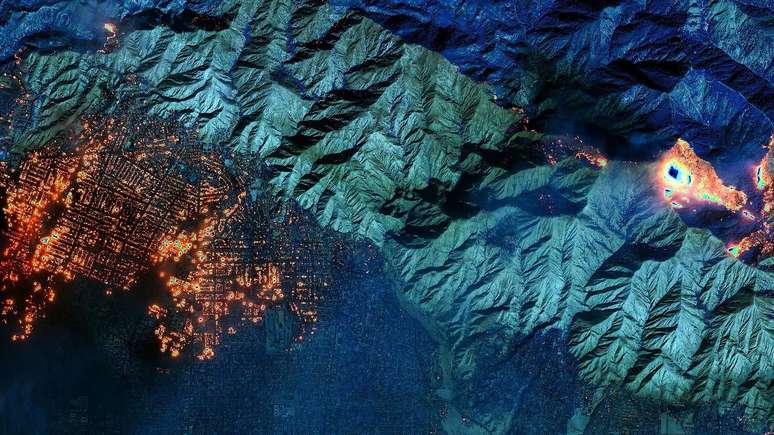
The area’s mountainous landscape also increases the risk of fires.
“The fires spread very quickly across the hills,” Hadden says. “Geographic features such as canyons and ravines can generate very extreme fire behavior that is difficult, perhaps impossible, to combat.”
This topography not only increases the risk of fire spread, but also makes evacuation difficult. In the Palisades area, narrow, hilly streets pose an added challenge for people trying to get out.
5. Climate change
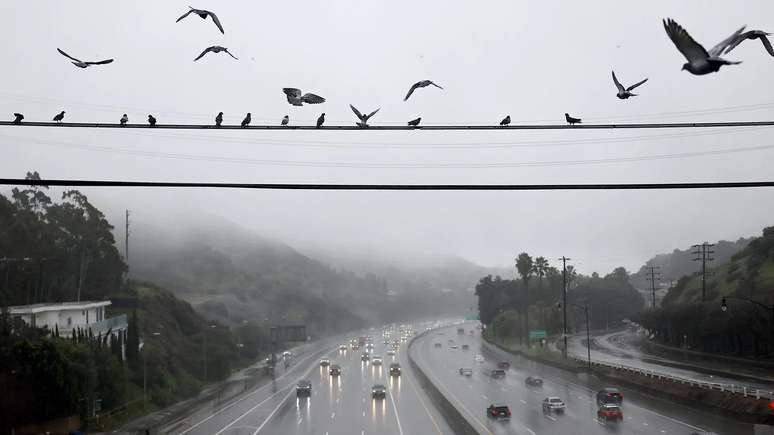
While it is too early to determine whether and to what extent climate change has contributed to these fires, it has been linked to worsening large fires around the world.
The number of days when the weather creates a high fire risk is increasing, and climate change is making these conditions more severe, says BBC News’ Matt McGrath.
The risk isn’t as simple as the world getting warmer, Hadden says. This also has to do with the range of extremes we are seeing.
“It’s the warmer climate, but it’s also combined with more extreme wind conditions and more extreme rain events that allow vegetation to grow. So we’re facing this big change not only with a hotter and drier climate,” but also more humid and windier, and everything that contributes from a climatic point of view. This is what will define risk in the future.”
Source: Terra
Rose James is a Gossipify movie and series reviewer known for her in-depth analysis and unique perspective on the latest releases. With a background in film studies, she provides engaging and informative reviews, and keeps readers up to date with industry trends and emerging talents.

